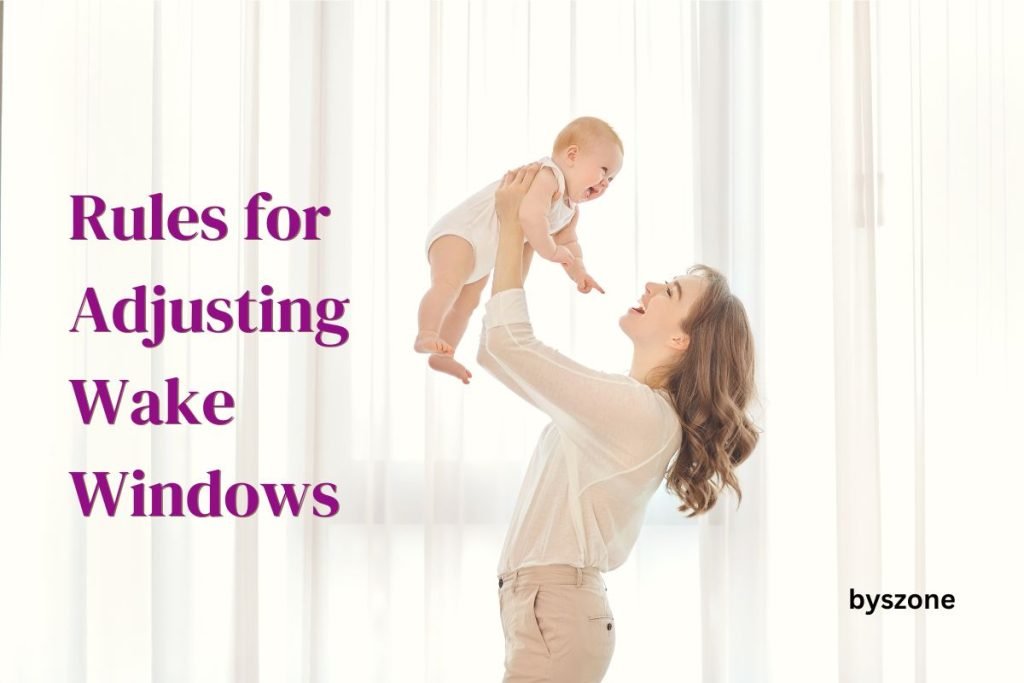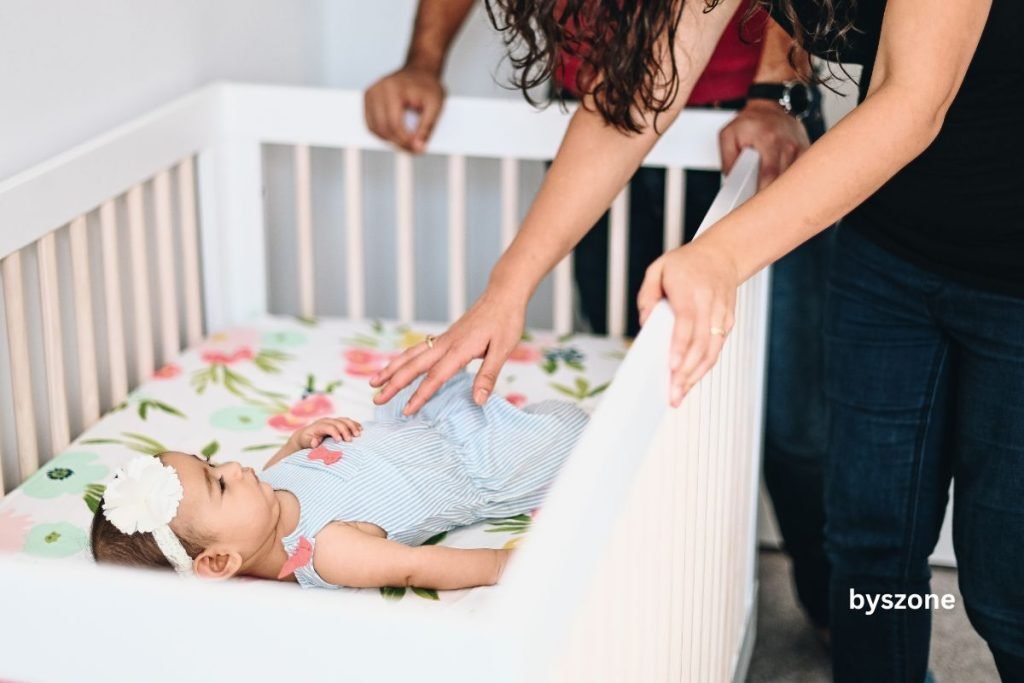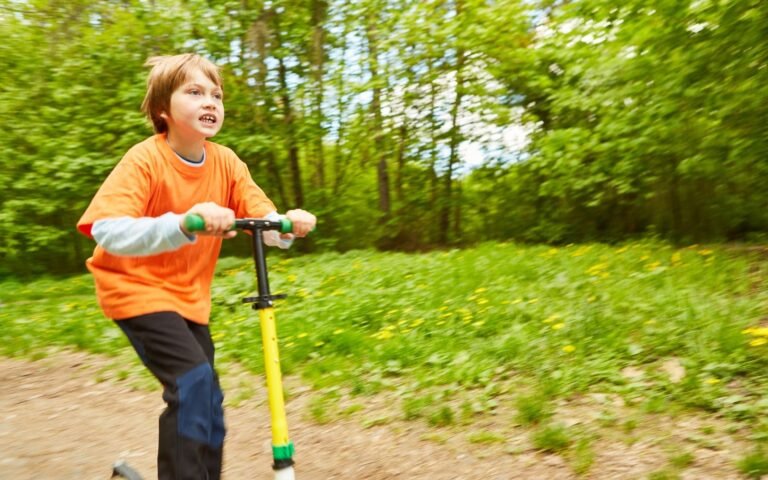Ultimate Wake Window Troubleshooting Tips: Common Problems and Solutions in 2025

Have you ever wondered how to make your baby sleep better and say goodbye to those nights without sleep?
Wake window troubleshooting tips: common problems and solutions need your help. It’s like your buddy knows everything about making your baby sleep happy.
Whether you’re trying to figure out wake windows or need fixes when your baby is super tired, this guide has your back.
It’s all about making a comfy sleep plan that fits your baby just right. Ready to start the journey to happy baby sleep?
Let’s check out the tips for fixing wake window issues – your ticket to nights filled with sweet dreams is just a scroll away!
Key Takeaways – Wake Window Troubleshooting Tips
- Observe your baby’s behavior closely and look for signs of tiredness or alertness.
- Gauge your baby’s position on the overtiredness-under-tiredness scale and adjust wake windows accordingly.
- Make gradual adjustments to your baby’s wake windows to improve sleep patterns.
- Every baby is unique, so observe their cues and adjust accordingly, as what works for one might not work for another.
Why Use Wake Windows?

Benefits of Wake Windows
Have you ever wondered how to make bedtime a breeze and ensure your little one gets the sleep they need? That’s where the magic comes in.
These intentional wakeful periods aren’t just a routine; they’re your ticket to a happier, more well-rested baby. Imagine a bedtime when your little one nods off effortlessly – that’s the beauty of embracing baby sleep with the help of wake windows.
For parents of twins, navigating sleep schedules can be especially tricky. That’s why Wake Window Twins Management is an invaluable resource to help you optimize wake windows and ensure both little ones get the rest they need.
Creating Predictability for Your Baby or Toddler
Let’s talk about the power of predictability in the world of parenting. With wake windows by age, you’re establishing a routine and creating a smoother, more harmonious household.
Picture this: a bedtime routine that works like clockwork, a baby who settles down quickly, and parents who get a bit of well-deserved downtime. It’s not just a dream – it’s the practical outcome of weaving fall-asleep moments into the strategic use of wake windows.
Understanding Wake Windows

Defining Wake Windows
Let’s start at the beginning – what exactly are wake windows? In simple terms, they are specific time frames when your baby is awake between naps or sleep.
Understanding this concept is like having a key to decipher your baby’s natural sleep rhythm. It’s not just about the time they spend asleep; it’s equally about the time they spend awake, managing the delicate balance of sleep pressure.
Calculating Awake Time for Babies and Toddlers
Now that we’ve defined wake windows, the next step is calculating the ideal awake time for your little one. Every baby is unique, and finding the right balance is important.
We’ll guide you through the process, making it as straightforward as possible. Imagine being able to predict when your baby is ready for their next nap or bedtime – that’s the beauty of mastering baby wake windows.
Including Feeding in Wake Windows
Feeding is a crucial part of your baby’s routine, and yes, it fits into the wake window puzzle. We’ll show you how to seamlessly integrate feeding into your baby’s awake time, ensuring they are well-nourished and ready for a cozy nap or bedtime.
It’s all about syncing the elements of your baby’s routine for a harmonious and stress-free experience, from the first wake window to the last nap.
Tips for Using Wake Windows

Stretching Wake Windows Appropriately
Let’s talk about stretching those wake windows – not like a morning workout, but a gentle, gradual stretch.
Imagine your baby transitioning from playing to a cozy nap without a fuss. Tips, like adding a few extra minutes to wakefulness, to make that happen. Managing the longest wake window can be a key strategy.
Activities During Wake Windows
Have you ever wondered what to do during your baby’s awake time?
We’ve covered you with various engaging activities suitable for different age groups. From playtime ideas to fostering developmental milestones, discover how to make the most of these wakeful moments and navigate through age-appropriate wake windows.
Play Ideas for Different Age Groups:
- Newborns to Infants (0-6 months): Gentle tummy time, soft sensory toys, and soothing lullabies are perfect for the early months.
- Babies (6-12 months): Explore colorful textures, introduce interactive books, or have a little dance party with your baby – they’ll love it!
- Toddlers (1-2 years): Get creative with building blocks, play pretend, or try simple crafts to enhance fine motor skills.
Significance of Stretching Wake Windows
Why is stretching wake windows important? We’ll uncover the significance of gradually extending these periods of wakefulness. You’ll see how it improves sleep and your baby’s overall well-being. It’s a small adjustment that can make a big difference in your daily routine.
Gradual Adjustments: Start Small
- Add a few extra minutes to your baby’s usual awake time.
- Begin with a small extension, like going from 60 to 65 minutes.
- Observe your baby’s response and adjust gradually.
Observe Sleep Cues
- Watch for signs like yawning, eye rubbing, or fussiness.
- These cues indicate when your baby may be ready for the next nap.
- Fine-tune wake windows based on your baby’s natural rhythm.
Flexible Routine: Adapt to Your Baby’s Needs
- Recognize that every baby is unique.
- Be flexible and adjust the routine according to your baby’s cues.
- Trust your parental instincts and adapt the routine as needed.
Rules for Adjusting Wake Windows

Adapting Wake Windows as Your Child Grows
Babies are like little growth champions; their sleep needs evolve with each milestone. Here’s your guide to adjusting wake windows as your child blossoms:
- 0-3 Months: Start with short wake windows of around 45-60 minutes. As your baby develops, gradually extend the duration to 60-90 minutes.
- 4-6 Months: Aim for 1.5-2 hours wake windows between naps. Be attentive to your baby’s cues and adjust accordingly.
- 7-12 Months: Extend wake windows to 2-4 hours. Introduce two naps during this period, aligning with your baby’s natural rhythm.
- 12-24 Months: Transition to one nap, typically around midday. Adjust wake windows to accommodate this change.
Managing Short Naps
Short naps can be a common challenge, but fear not! Let’s navigate this hurdle together:
- Understand Sleep Cycles: Babies cycle through sleep stages, and short naps might result from incomplete cycles. This is often a phase that can be outgrown.
- Create a Soothing Environment: Ensure the sleep space is conducive to longer naps. Keep the room dark, maintain a comfortable temperature, and use white noise if needed.
- Adjust Wake Windows: Sometimes, tweaking wake windows can help improve nap duration. Experiment with slightly longer or shorter awake times.
- Be Patient and Consistent: Rome wasn’t built in a day, and longer naps might take time. Stay consistent with your nap routine; you might notice positive changes.
Customizing Wake Windows

Age-Appropriate Wake Windows for Babies
Navigating wake windows requires understanding your baby’s unique needs at different stages. Let’s tailor those wake windows based on age:
- Newborns (0-3 Months): Begin with short wake windows of 45-60 minutes, adjusting based on cues and employing sleep pressure techniques.
- Infants (4-6 Months): Gradually extend to 1.5-2 hours between naps, fostering a more structured routine and addressing the challenges of short naps . For parents considering sleep training, check out Sleep Training Techniques for Babies to complement your wake window strategies and encourage healthy sleep habits.
- Babies (7-12 Months): Embrace wake windows of 2-4 hours. Introduce two naps, aligning with your baby’s developmental leaps and managing morning wake transitions.
- Toddlers (12-24 Months): Transition to one midday nap, adjust wake windows to accommodate this change, and deal with night wakings.
Age-Appropriate Wake Windows for Toddlers
As your little one takes those first steps into toddlerhood, here’s how to customize wake windows:
- 3 Years: A single afternoon nap typically suffices. Tailor wake windows to balance energy expenditure and rest, addressing night sleep concerns.
- 3-5 Years: Gradually transition to dropping the nap, emphasizing a consistent nighttime sleep routine with appropriate wake windows and managing falling asleep challenges.
Ensuring the Right Wake of Windows
Customizing wake windows isn’t just about age; it’s about understanding your child’s needs. Here’s how to ensure you’ve got it just right:
- Watch for Cues: Pay attention to your child’s signals – yawning, rubbing eyes, or changes in behavior. These cues indicate the ideal time for the next sleep or awake period, avoiding an overtired baby.
- Trial and Error: Finding the perfect wake window is like trying on shoes. Experiment with different wake times, observe your child’s response, and adjust accordingly, especially when dealing with night-waking scenarios.
- Consistency is Key: Once you’ve found the right wake window, stick with it. Consistency helps your child’s internal clock synchronize, promoting a smoother sleep routine and mitigating the baby’s struggles.
Managing Sleepy Cues

Identifying Your Baby’s Tired Cues
Babies have their language when it comes to expressing tiredness. Let’s decode those subtle signals and understand when it’s time for some well-deserved rest:
- Yawning: A classic sign that your little one is ready for a nap.
- Eye Rubbing: Those tiny fists rubbing their eyes often indicate drowsiness.
- Crankiness: Irritability or fussiness can be a clear indicator that it’s naptime.
By recognizing these cues, you become a sleep detective, ready to create the perfect wake window for your baby.
Creating a Customized Wake Window and Nap Schedule
Now that you’ve mastered the art of reading your baby’s sleepy cues, let’s talk about crafting a personalized wake window and nap schedule:
- Observe and Note: Keep a journal of your baby’s natural wakefulness patterns. Note the times they naturally seem more alert or show signs of tiredness.
- Experiment with Wake Windows: Test different wake window lengths to see which aligns best with your baby’s sleepy cues.
- Factor in Nap Duration: Consider how long your baby naps. A longer nap might mean a slightly longer wake window.
- Be Flexible: Babies are constantly growing and changing. Stay adaptable and tweak the schedule, especially when managing nap and bedtime transitions.
Creating a customized wake window and nap schedule based on your baby’s tired cues sets the stage for a smoother, more predictable sleep routine. It’s all about understanding your baby’s unique rhythm and responding with a tailored approach.
The Overtiredness Undertiredness Scale

Understanding the Scale
Finding the right balance between addressing issues with a child’s wake window and preventing them from becoming too tired can be a tricky task that requires skill and finesse. Let’s demystify the scale and comprehend the signs:
- Overtiredness: Look for cues like increased fussiness, difficulty settling, and heightened irritability. These are indicators that your baby has surpassed the optimal wake window and may benefit from some fresh air.
- Undertiredness: On the flip side, under-tiredness may include a lack of interest or difficulty falling asleep due to insufficient energy during wakefulness. It’s crucial to manage sleep periods appropriately.
By recognizing these cues, you can use the scale to craft the perfect wake window.
Finding the Balance for Optimal Sleep
Now that we’ve decoded the overtiredness under the tiredness scale, let’s explore how to strike that elusive balance for the best sleep:
- Observe Behavior: Pay close attention to your baby’s behavior during wakefulness. Are they engaged and curious, or are they displaying signs of fatigue?
- Fine-tune Wake Windows: Adjust wake windows based on your observations. If your baby consistently shows signs of overtiredness, consider shortening the wake window and vice versa for under-tiredness.
- Consistency Matters: Consistent sleep routines contribute to finding the right balance. Stick to regular wake times and bedtime to help regulate your baby’s internal clock.
Slow and Steady Wins the Race

Gradual Adjustments to Wake Windows
In the world of baby sleep, the tortoise’s approach often triumphs. Let’s explore the art of making gradual adjustments to wake windows for a smoother transition:
- Start Small: Instead of abrupt changes, opt for small, incremental adjustments. If your baby’s wake window is 60 minutes, consider extending it by 5-10 minutes initially. This method aligns with the baby’s sleep needs.
- Observe Responses: Pay attention to how your baby responds to these gradual changes. Are they more alert, or does it lead to increased fussiness? Adjustments should align with your baby’s comfort and avoid creating an overtired baby.
- Give It Time: Rome wasn’t built in a day, and neither are perfect wake windows. Allow a few days for your baby to adapt before making further adjustments. This approach ensures a smoother transition without causing unnecessary night wakings.
Ensuring Smooth Transitions
Smooth transitions are the goal, and the tortoise’s pace plays a key role:
- Consistency is Key: Keep wake times and bedtime consistent. Predictability helps your baby’s internal clock adjust to the new wake window, minimizing falling asleep challenges.
- Create a Calming Routine: Introduce calming activities as you approach nap or bedtime. A soothing routine signals your baby that it’s time to wind down, promoting stay-asleep habits.
- Be Attentive to Cues: Watch for your baby’s sleepy cues and adjust your routine accordingly. A seamless transition relies on understanding and responding to your baby’s needs, including nap and bedtime cues.
Encouragement for Better Sleep

Empowering Parents with Positive Sleep Practices
Embarking on the journey to better sleep is a shared experience, and every parent deserves a toolkit of encouragement. Here’s how we can empower you with positive sleep practices:
- Celebrate Small Wins: Acknowledge and celebrate the little victories along the way. Whether it’s a smoother bedtime routine or a nap that went without a hitch, these small wins add up.
- Practice Self-Compassion: Parenting is a challenging but rewarding journey. Be kind to yourself. If a night doesn’t go as planned, remember that tomorrow is a new day.
- Share Success Stories: Connect with other parents, share your successes, and learn from theirs. Positive stories and shared experiences create a supportive community.
Reinforcing the Importance of Consistency
Consistency is the cornerstone of better sleep, and here’s why it matters:
- Predictability Soothes Babies: Babies thrive on routine. Knowing what to expect creates a sense of security, making it easier for them to transition between wakefulness and sleep.
- Creates Healthy Sleep Habits: Consistent sleep patterns contribute to developing healthy sleep habits, benefiting you and your baby in the long run.
- Builds Trust: When your baby experiences a consistent routine, they learn to trust the predictability of their environment. This trust is fundamental for a secure and restful sleep.
As you navigate the path to better sleep, remember you’re not alone. Empowering parents with positivity and reinforcing the importance of consistency creates a foundation for a more peaceful and restful sleep journey.
Summary
We’ve found tips to improve baby and toddler sleep. By recognizing falling asleep cues and finding the right wake windows, we can help our little ones get the rest they need.
As we emphasize two nap schedules and the power of gradual adjustments, parents are empowered with positive sleep practices. Slow and steady wins the race, creating a harmonious rhythm for our little ones.
Celebrate small victories, share stories, and embrace the importance of nurturing healthy sleep habits. Together, we foster a community that understands the nuances of parenthood.
In conclusion, let’s carry forward this knowledge – a guide to crafting nights of sweet dreams and days of joy. Here’s to well-rested and happy little ones, a testament to the art of tailored wake windows and the journey to restful slumber.
Frequently Asked Question
What Is the Problem with Wake Windows?
- Insufficient wake windows may lead to difficulty falling asleep or shorter naps.
What Causes Short-Wake Windows?
- Overtiredness or disruptions in the sleep routine can shorten wake windows.
How Do You Master Wake Windows?
- Observe your baby’s cues, maintain a consistent routine, and adjust wake windows based on age and sleep needs.
Can Wake Windows Change Suddenly?
- Yes, they can change with growth and developmental milestones, so stay flexible in adapting to your baby’s evolving sleep patterns.
Should You Shorten or Lengthen Wake Windows?
- Adjust wake windows based on your baby’s signals; aim for a balance to prevent overtiredness or difficulty settling down.




